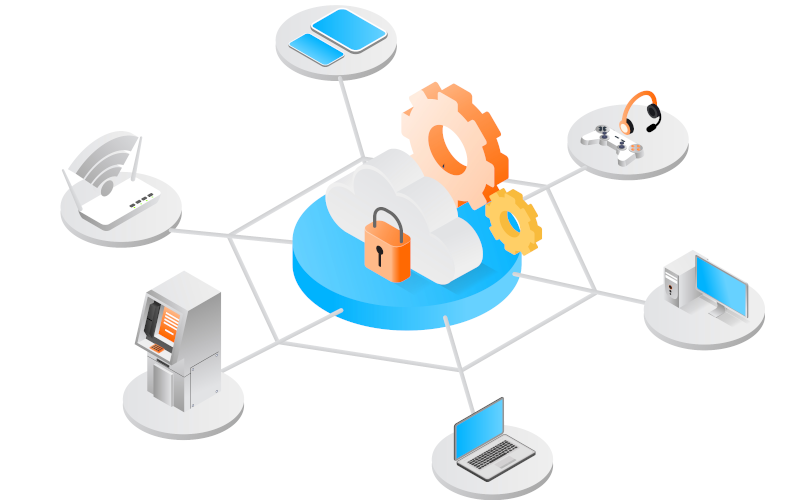
The Purple Teams are exercises in which three very well differentiated teams participate: a Red Team, a Blue Team and a Purple Team. The Red Team will be in charge of carrying out attacks on the defined structure, the Blue Team will be the team in charge of defending that structure and the inclusion of the Purple Team allows the two previous teams to communicate with each other and be organized correctly thanks to the work of the purple team. This is why the Purple Teams allow a great number of advantages to be obtained with respect to carrying out the exercises separately and without coordination between them.
This article presents all these advantages and much more about Purple Teams.

When a security incident occurs in an ICS (Industrial Control System), depending on the severity of the incident, it can generate a serious problem, both at a productive and economic level, as well as in the security of the people working in the industrial system.
Therefore, in this article following the one entitled "Good practices for the recovery of industrial systems (I)", response plans will be discussed from a point of view oriented to current regulations, as well as their applications and necessity in critical industrial environments, such as the energy sector.

When a security incident occurs in an ICS (Industrial Control System), depending on its severity, it can generate a serious problem, both at a productive and economic level, as well as in the security of the people working in the industrial system.
Therefore, in this first article of a series on this subject, we will explain precisely the recovery plans, some general guidelines for their development and some conclusions on the use and applicability of these plans.

IDSs are passive elements that are in our network to ensure its security, but what would happen if all our communications were encrypted, or would this protection measure be enough to ensure that my network is protected? These questions and more will be discussed in the following article to provide solutions and advice focused on industrial environments.

A growing number of industrial companies are adopting vulnerability management on their devices and systems, in order to perform this management in a correct and efficient way, the first step is to create an asset inventory or update it. Some companies are looking for vulnerability management services to stay on top of the latest cybersecurity issues affecting their assets. In addition, we are also noticing an increase in the availability of tools and their implementation for vulnerability management.

With the industrial revolution of Industry 4.0, industrial processes have become more intelligent, and this has led to the deployment of a greater number of devices.
All these deployments usually have a common point, being the gateways, which, after being deployed, are responsible for the translation of some protocols to the TCP/UDP frame or simply send the information to the cloud.
Being a point that gathers a large amount of data and capable of providing intelligence to industrial processes, industrial gateways have become a very desirable target for attackers.

The programming of PLCs is a fundamental part of the initial phases when building and designing industrial plants. About that environment, the company will base all its operations in that environment making the configuration of these controllers a critical element. When it comes to programming these devices there are a series of steps and best practices that take advantage of the native functionalities available and that involve little or no need to resort to a PLC programmer, protecting the device in a simple way with minimum spend on resource.

In the year 2022 and as is reflected in the article “Industrial Security 2022 in numbers”, cyberattacks in all industrial sectors have increased by around 30 % in the third quarter of 2022 and it is estimated that the number of organizations or industrial manufacturers victims of a cyberattack was around 40% in the last year. Especially in the industrial sector, the number of attacks has grown exponentially due to the massive introduction of IoT devices (it is expected to go from 13.5 to 21.5 million connected devices in three years) or more specifically about IIoT devices, which have been the main gateway for attacks as manufacturers have prioritized features and mass-production of devices over the security. In addition, this is compounded by planned obsolescence planned (increasingly present in this type of devices), increased interoperability and connectivity and the appearance of new types of malware and exploits which are much more effective.

Nobelium es la denominación de Microsoft para un grupo de atacantes que, según la atribución llevada a cabo por la Agencia de Seguridad de Infraestructura y Ciberseguridad (CISA) de Estados Unidos, pertenecen al Servicio de Inteligencia Exterior (SRV) de Rusia. Este grupo criminal es conocido por el ataque a la cadena de suministro de SolarWinds, y una campaña masiva de phishing haciéndose pasar por una empresa de desarrollo estadounidense.

This post presents some lines of action that should be followed to deal with a DrDoS cyberattack based on the ARD protocol, describing in detail the prevention, identification and response phases to follow.



